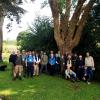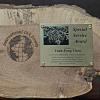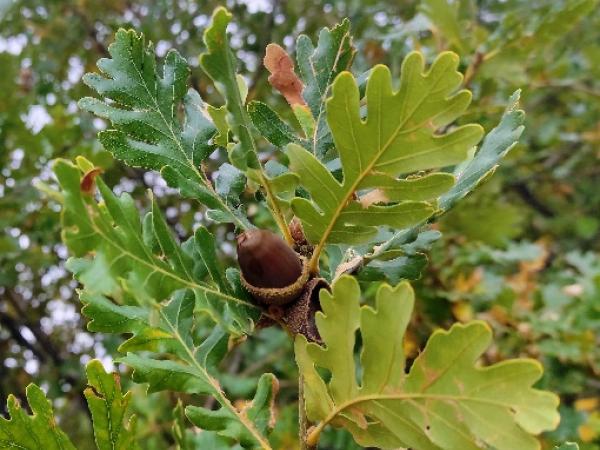Editor's Picks
Plant Focus
An acorn from a specimen of Quercus insignis growing in Hackfalls Arboretum in New Zealand germinated earlier this year. This is very likely the first time this species has successfully reproduced outside its native habitat—and it has done so in a place about as far as you can get from its home in Mexico and Central America. The seedling sprouted in Eastwoodhill Arboretum, the National Arboretum of New Zealand, and will be planted there in due course.
Quercus insignis acorns were collected by legendary centenarian Mexican oak collector Bob Berry and Peter Murphy in 1989 near the city of Huatusco in Veracruz, Mexico. Three trees grown from those acorns grow in Bob’s Hackfalls Arboretum and at least another 4 were given away as seedlings and grow in other places in New Zealand. One of the Hackfalls trees was the first one to produce acorns in 2016, at 27 years old. Acorns from this species are the largest in the genus and have an unusual shape: the acorn is a squat disk, much broader than high. Also unusual is the fact that it sprouts from the base, which makes sense as due to its shape it is likely to sit base-down after falling to the ground, rather than lie horizontally like other acorns that sprout from the tip.
According to Dan Haliday, Curator at Eastwoodhill Arboretum, the story behind the seedling is not devoid of drama. The excitement began when Diane Playle, manager at Hackfalls, spotted an immature acorn on the lower branches on one of the Q. insignis in the arboretum in early 2016 (summer in NZ). “The week after Diane’s discovery,” said Dan, “[Plant Collection Assistant] Dan Taylor and I drove up to Hackfalls on a seed collecting mission for Eastwoodhill. While wandering among the extraordinarily diverse collection of exotic and native trees and shrubs we happened upon the Quercus insignis tree. Dan remarked on the large acorn and was about to pluck it off the branch. My heart lurched and I let out a yelp: “DON’T TOUCH THAT ACORN!” Of course, he thought he was in mortal danger… which he nearly was! I quickly explained he had very nearly destroyed the rarest acorn in New Zealand.”

growing in Eastwoodhill Arboretum, March 2017 © Dan Haliday
A ventilated sack was tied around the branch and acorn to protect it from future mishaps and a second acorn was subsequently spotted higher in the tree. On a later visit, Eastwoodhill staff found that the acorn in the sack had detached, but the second one had disappeared. Despite the challenges of sloping ground and grazing sheep, this second, larger acorn was eventually located and both were presented to Bob, who measured and photographed them, and offered any resulting seedlings to Eastwoodhill.
The Hackfalls tree did not produce acorns this season, so it remains to be seen how often these trees will fructify. Based on leaf shape it would appear that the seedling is a hybrid, which is indeed a likely outcome in this case. Nevertheless, the seedling will perpetuate the female parent’s genes, and the fact remains that this is the first record of this species producing viable seed outside its native range.
Further reading
Eastwoodhill Arboretum newsletters (click on links to download):















